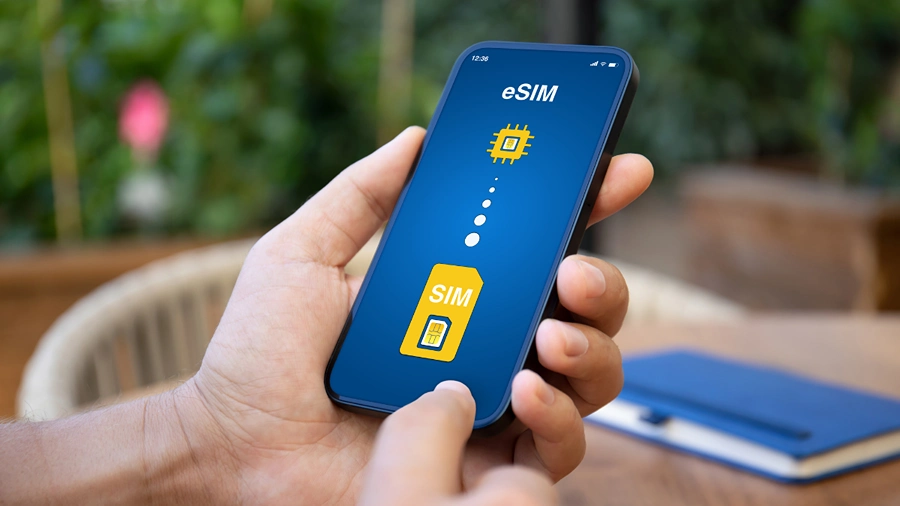As a digital nomad who’s spent plenty of time bouncing between the islands of the Philippines, I’m often asked how to get high-speed internet in rural areas. It’s a common concern for travellers venturing beyond the bustling cities.
Well, the answer lies in choosing the right eSIM. Airalo’s Philippine eSIM is a solid option, offering reliable coverage and flexible data plans that make staying connected easy, regardless of your location.
If you’re planning a more extended stay or want a plan that includes voice services along with data, Globe’s local eSIM could be your go-to option, providing extensive coverage nationwide.
In this guide, we’ll compare both to help you figure out which eSIM suits your needs best—whether you’re here for a quick trip or a longer adventure.
Comparison Overview
Airalo: As someone who’s been living in and out of the Philippines for a while, I can tell you that Airalo’s eSIM has been a game-changer.
It’s a global eSIM provider that focuses on convenience, offering a variety of flexible data plans designed specifically for short-term travellers like me.
Whether I’m hopping from one island to another or spending a few weeks in Manila, Airalo has got me covered with data packages ranging from a few gigabytes for just a week to larger packages for up to a month.
The beauty of Airalo is its simplicity; you don’t need to worry about physical SIM cards or any local procedures. Simply activate your eSIM from the comfort of your own home, and when you land in the Philippines, you’ll be all set.
Airalo is especially great for those who, like me, don’t want to deal with roaming charges or local SIM hassles, while also enjoying the freedom of staying connected wherever you roam.
Globe: On the other hand, Globe is the local telco that shines if you’re planning a more extended stay or need voice services in addition to data.
As a local operator, Globe offers extensive coverage across the Philippines, so I know I’m well-connected even in more remote areas. With both prepaid and postpaid options, their plans cater to a wide range of needs.
Globe’s eSIM is also ideal for those looking for traditional services like voice calls and SMS, which Airalo doesn’t offer. This makes Globe an excellent option if you prefer to have a local number and don’t want to rely solely on internet-based communication.
However, for travellers like myself who only need data, getting set up with Globe can be a bit more involved compared to the seamless experience Airalo offers.
Still, Globe’s strong local presence and extensive network make it a solid choice for long-term stays or anyone who needs the complete package.
Points of Comparison
Variety of Plans
Airalo: As someone who’s always on the move, Airalo’s eSIM plans are a dream for short-term travellers.
They offer data-only plans that range from 1GB for 7 days to 20GB for up to 30 days, which is ideal for those of us who don’t want to commit to lengthy contracts or bulky packages.
The flexibility is one of Airalo’s strongest points. You can easily adjust the plan to match your specific travel needs, whether you’re visiting for a weekend or staying for a month.
However, it’s worth noting that Airalo’s plans are data-only, meaning they do not include voice or SMS services.
While this isn’t a problem for many digital nomads like myself who rely on apps such as WhatsApp or Skype for calls and messages, it’s something to keep in mind if you’re someone who prefers traditional communication methods.
Globe: Globe offers a broader selection of plans, especially suited for those who want a full-service experience while in the Philippines.
They provide both data and voice services, which are essential for travellers who may need to make local calls or send text messages.
Globe’s prepaid and postpaid options provide you with the flexibility to choose the option that best suits your needs, whether it’s short-term or long-term. If you’re staying for an extended period or prefer the convenience of having both voice and data, Globe might be the more comprehensive option.
While this variety makes Globe an excellent choice for some, those of us seeking data-only flexibility may find Airalo’s streamlined offerings more appealing.
Price and Affordability
Airalo: When it comes to pricing, Airalo offers excellent value for short-term stays.
Prices start from just $4.50 for 1GB, which is more than enough for a quick trip to the Philippines, and go up to $32 for 20GB, offering you substantial data for an extended stay.
The pricing is straightforward, with no hidden fees or surprises, making it ideal for a hassle-free experience. Since Airalo’s plans are pay-as-you-go, you can purchase precisely what you need without worrying about overpaying for a service you won’t use.
This level of transparency and cost-effectiveness is beneficial when you’re hopping between countries or need a quick data boost while exploring the Philippines.
For digital nomads who don’t need to lock into a long-term deal, Airalo’s pricing is simple and budget-friendly.
Globe: Globe’s prepaid eSIM is priced at Php 99 for 5GB, which is valid for 3 days.
While this is a solid option for those visiting the Philippines for a short period, it’s a bit pricier per day compared to Airalo’s offering.
Globe also has postpaid plans, but these can be more complex and often require a more personalised approach, with prices varying based on your specific needs.
For those who require voice services and additional data over a longer period, Globe’s offerings can still be a reasonable choice.
However, if you’re just looking for data and want to stick to a tight budget, Airalo’s lower entry points may offer better bang for your buck.
Network Coverage
Airalo: Airalo utilises Globe’s network in the Philippines, which means its coverage is mainly dependent on Globe’s infrastructure.
This provides good coverage in major cities and popular tourist destinations, such as Manila, Cebu, and Davao. While it’s excellent in urban areas, coverage in more remote regions may be limited.
The speeds you’ll get with Airalo are typically 4G/LTE, which is perfect for browsing, streaming, and navigating the islands.
However, as a traveller who’s ventured off the beaten path in the Philippines, I’ve found that 5G isn’t widely available through Airalo, which is something to consider if you’re looking for faster speeds in the future.
Globe: Globe offers more extensive coverage across the Philippines, including both urban and rural areas.
If you’re planning to stay in remote parts of the country, Globe’s network is one of the most reliable for long-term residents and local travellers.
They provide support for both 4G/LTE and 5G in select locations, which is perfect if you’re in an area where next-gen speeds are available.
For anyone staying in the Philippines for an extended period, Globe’s widespread service, including voice calls and texts, may prove to be the better option, especially in less touristy parts of the country where coverage can sometimes be spotty with other providers.
Device Compatibility
Airalo: Airalo is incredibly versatile in terms of device compatibility. As long as your phone supports eSIM technology, you’ll be able to use Airalo’s service, which is compatible with most modern smartphones.
For a digital nomad like me, this is a huge plus since I can switch seamlessly between countries and devices. The activation process is easy – you simply scan a QR code after purchasing your plan.
No need to physically swap out SIM cards, and you’re ready to go in no time. This level of convenience makes Airalo a top choice for those who don’t want to waste time setting up a new SIM every time they travel.
Globe: Globe also supports eSIM on compatible devices, but the activation process differs slightly.
To get started, you’ll need to use the GlobeOne app, and there might be more steps involved, especially if you’re visiting as a tourist or traveller.
While it’s generally straightforward for those with compatible devices, it’s worth noting that not all phones support Globe’s eSIM, so you’ll need to ensure your device is compatible with it.
If you’re on the go, the setup process might feel a bit more cumbersome compared to Airalo’s simple QR code method. Still, Globe’s compatibility with a range of devices makes it a solid option for those staying within the Philippines for an extended period and who need the full-service package.
Comparison Table
| Feature | Airalo | Globe |
| Plan Variety | Data-only, flexible durations | Data + Voice, prepaid/postpaid |
| Pricing | $4.50 – $32 | Php 99 – varies |
| Network Coverage | Globe’s network | Extensive nationwide coverage |
| Device Compatibility | eSIM-enabled devices | Compatible devices via GlobeOne app |
| Activation | QR code | GlobeOne app |
Final Verdict: Which eSIM Should You Choose for The Philippines?
In my travels across the Philippines, I’ve come to realise that the right eSIM can make or break your stay, especially when you’re working remotely or exploring off-the-beaten-path locations.
If you’re a short-term traveller or digital nomad like me, Airalo is the clear winner. It offers the flexibility and cost-effectiveness that we all crave when hopping between islands or staying in cities for a limited time.
With its easy setup, transparent pricing, and data-only plans, it’s ideal for those who need a reliable connection without all the extras.
On the other hand, if you’re in the Philippines for the long haul and prefer a more traditional mobile experience, Globe has got you covered.
With its comprehensive coverage of both data and voice services, as well as multiple plan options, it’s tailored for long-term residents who need consistent, all-around service.
However, for a hassle-free, budget-friendly experience where data is your primary focus, Airalo stands out as the best option—especially for those of us who value simplicity and efficiency in a mobile plan.

